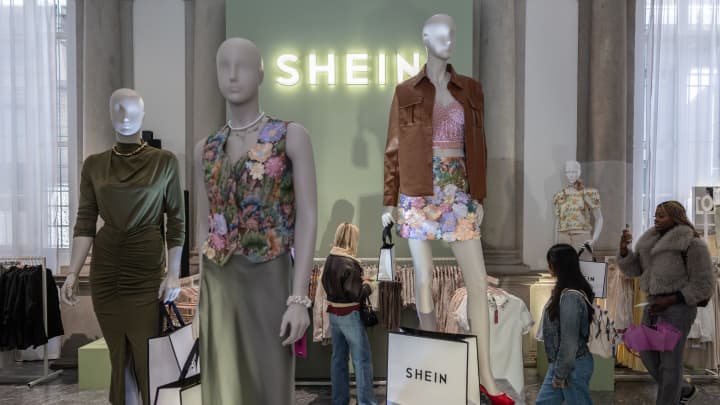Shein’s journey toward a public listing has become one of the most turbulent IPO sagas in recent memory, transforming from a triumphant debut story into a cautionary tale of regulatory complexity and geopolitical tensions. The Chinese-founded fast fashion giant, once valued at a staggering $100 billion, now finds itself an increasingly treacherous path toward going public as mounting challenges threaten to derail its ambitious plans.
What began as a straightforward listing ambition has evolved into a multi-continental chess game, with Shein pivoting from New York to London and now potentially to Hong Kong as regulatory roadblocks continue to emerge. The company’s struggles reflect broader tensions in global trade relationships and highlight the growing scrutiny facing Chinese companies seeking international capital markets.
The stakes couldn’t be higher for the fast fashion industry’s most disruptive player. Shein’s direct-to-consumer model, which bypasses traditional supply chains to offer ultra-low prices like $5 t-shirts and $7 shoes, has revolutionized how consumers shop for fashion. However, this same model now faces existential threats from changing trade policies, sustainability concerns, and allegations about labor practices that have transformed the company’s IPO from a symbol of innovation into a test of whether fast fashion can survive increased regulatory oversight.
As 2025 progresses, investors and industry observers are watching closely to see whether Shein can overcome these mounting challenges or if the company’s IPO troubles signal a broader reckoning for the fast fashion sector. The outcome will likely determine not just Shein’s future but also set precedents for how global regulators approach Chinese companies and fast fashion businesses seeking public market access.
Regulatory Roadblocks Across Multiple Markets
Shein’s IPO journey has been marked by a series of regulatory setbacks across its target markets. The company initially aimed for a U.S. listing but faced significant pushback from politicians, including current Secretary of State Marco Rubio, who criticized the company’s labor practices. This opposition forced Shein to abandon its New York Stock Exchange ambitions and pivot to London.
The London Stock Exchange initially appeared more welcoming, with the UK’s Financial Conduct Authority granting regulatory approval in April 2025. However, the crucial final step—approval from China’s Securities Regulatory Commission (CSRC)—remained elusive. The company encountered “unforeseen delay and limited communication” from Chinese regulators, effectively stalling the IPO process.
Now, Shein is reportedly preparing to file confidentially for a Hong Kong IPO, potentially as early as late June 2025. This confidential filing approach is unusual for Hong Kong, where high-profile IPOs typically involve public disclosure of documents. The move represents a rare departure from the city’s standard practices and highlights Shein’s desperate search for a viable listing venue.
Trade Policy Changes Threaten Business Model
The most significant challenge facing Shein comes from fundamental changes to U.S. trade policy. The termination of the “de minimis” rule, which previously allowed imports under $800 to enter the U.S. duty-free, has struck at the heart of Shein’s competitive advantage. This policy change means Shein now faces 120% tariffs on items sourced from China, dramatically impacting its ability to offer ultra-low prices to American consumers.

The U.S. market represents approximately one-third of Shein’s $38 billion annual revenue, making these tariff changes particularly damaging. In response, the company is reportedly considering restructuring its American business, potentially diverting production for U.S. customers to countries outside China, like India and Brazil. However, such changes would require significant operational adjustments and could diminish the cost advantages that have made Shein successful.
Valuation Collapse and Financial Pressures
The mounting challenges have taken a severe toll on Shein’s valuation. The company’s worth has plummeted from $100 billion in 2022 to $66 billion in 2023, with some investors now pushing for a further reduction to around $30 billion for any potential IPO. This dramatic decline reflects growing concerns about the company’s ability to maintain its growth trajectory amid regulatory headwinds.
Financial performance has also deteriorated significantly. Despite a 19% increase in revenue to $38 billion in 2024, Shein’s net profit fell nearly 40% year-over-year to approximately $1 billion. This decline is attributed to intensified competition from rivals like Temu and rising operational costs associated with regulatory compliance and supply chain adjustments.
Looking Ahead: Uncertain Future for Fast Fashion IPO
As Shein continues to navigate these challenges, the timeline for its IPO remains uncertain. Originally planned for the first half of 2025, the listing has been postponed to the second half of the year at the earliest. Industry analysts suggest that accepting a lower valuation might be the most realistic path forward, as investors are unlikely to support inflated numbers given the clear risks facing the company.
The outcome of Shein’s IPO saga will likely have broader implications for the fast fashion industry and Chinese companies seeking international listings. Success could validate the resilience of innovative business models despite regulatory challenges, while failure might signal a new era of increased scrutiny and reduced access to global capital markets for similar companies.

